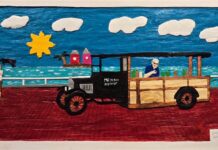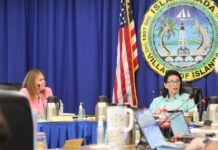Missouri and Ohio keys are situated in the Lower Keys and, at least in terms of the Overseas Highway, are linked one after the other. Missouri Key is in the area of MM 39 and sandwiched between Ohio Key and Little Duck Key. Railroad workers reportedly named both during the construction of the first conduit to connect Key West to the Florida mainland, Henry Flagler’s Over-Sea Railroad. Workers hailing from those particular states likely chose the names.
The islands have known other names. Missouri Key has been called Little Grassy Key and Grassy Island. Ohio Key is sometimes called Sunshine Key because the Sunshine Key RV Resort and Marina occupies much of the island. After Ohio Key, there is something of an anomaly in the Florida Keys, Bahia Honda. While the island chain is not world-renowned for its beaches, most rules have exceptions, and Bahia Honda’s Sandspur Beach is nothing short of exceptional. In 1992, Dr. Beach himself, Stephen Leatherman, declared it the Best Beach in America. (Leatherman is a recognized expert in coastal research at Florida International University.)
Whether traveling by train in the old days or driving along the Overseas Highway today, the next island in the chain is recognized as West Summerland Key. Just north of the Spanish Harbor Bridge that connects West Summerland to Big Pine Key is Big Mangrove Island. On Florida East Coast Railway survey maps, Big Mangrove Island is identified as Iowa Key and named for the same reason Missouri and Ohio keys earned their stately monikers.
Not all of the islands named after states in the Florida Keys stem from the railroad years.
Vermont Key, for instance, appears on the 1855 U.S. Coast Survey’s “Sketch Showing the Positions of the Beacons on the Florida Reefs.” Two years later, Abner Doubleday, the man who absolutely did not invent baseball but was a career officer in the U.S. Army, was sent on assignment to the Florida Keys. In an 1857 report, he, too, identified the island as Vermont Key.
Charles Smith, the first man to begin official government surveys of the island chain, used the more familiar Windley Island—reportedly after a local man. Fishing guide William H. Gregg’s 1902 guidebook named it Windy Island. During the railroad’s construction, records indicate that between Plantation Key and Lower Matecumbe Key there were two islands identified as the Umbrella Keys. Railroad workers filled the narrow gap separating the two islands. The now-single island is recognized as Windley Key.
The northernmost of the Florida Keys is found between Key Biscayne and the southernmost point of Miami Beach. On modern charts it is called Virginia Key. It was not the first name associated with the island. In William Roberts’ 1763 work “First Discovery and Natural History of Florida,” he writes, “To the north hereof (Cayo de Biscayno) lies the small island of Cayo Ratones, about four miles in length, on which there is an Indian town, called Pueblo Ratones, which is the only settlement of Indians that we have any account of on the Martyres.” While the Florida Keys were once home to several Indian villages, with the largest being on Upper Matecumbe Key, the aboriginal people had all but disappeared from the island chain by the mid-18th century.
U.S. Coast and Geodetic Survey Assistant Superintendent F. H. Gerdes, assistant to Superintendent Alexander Bache, the great-great-grandson of Benjamin Franklin, surveyed the Florida Keys from Biscayne Bay to the Dry Tortugas. He identified Cayo Ratones as Virginia Key, noting it was “about 3 miles long and 1 mile wide, a wooded area with a fine Atlantic beach; Southern passage called Bear Cut with 4 feet water.”
There is one last island in the chain that, during the railroad era, bore a state’s name. The small island can be found on the Gulf side of the Seven Mile Bridge just before reaching Little Duck Key. Today the island is called Little Money Key. On early railroad-era survey charts, it was identified as Delaware Key. It has also been known as Cerion Key, named for the presence of the land snail Cerion incanum, once found in abundance on the island. This island has one other name associated with it, at least according to my wife and me.
Whenever driving over the Seven Mile Bridge, we look over at the island and call it Hoo Key, named for the cat I moved to the Florida Keys with 20 years ago. His proper name was Alex, Alexander Von Kitten. He had several nicknames, including the name Ally-Hoo given to him by Michelle. Alex died several days before we were married on April 26, 2009. We began to imagine this little island is where the rainbow bridge delivered his sweet spirit to romp and roam as he chases lizards. Over the years, it has become known to us as Hoo Key. Also, Happy Anniversary, honey. It’s been 12 great years.





















